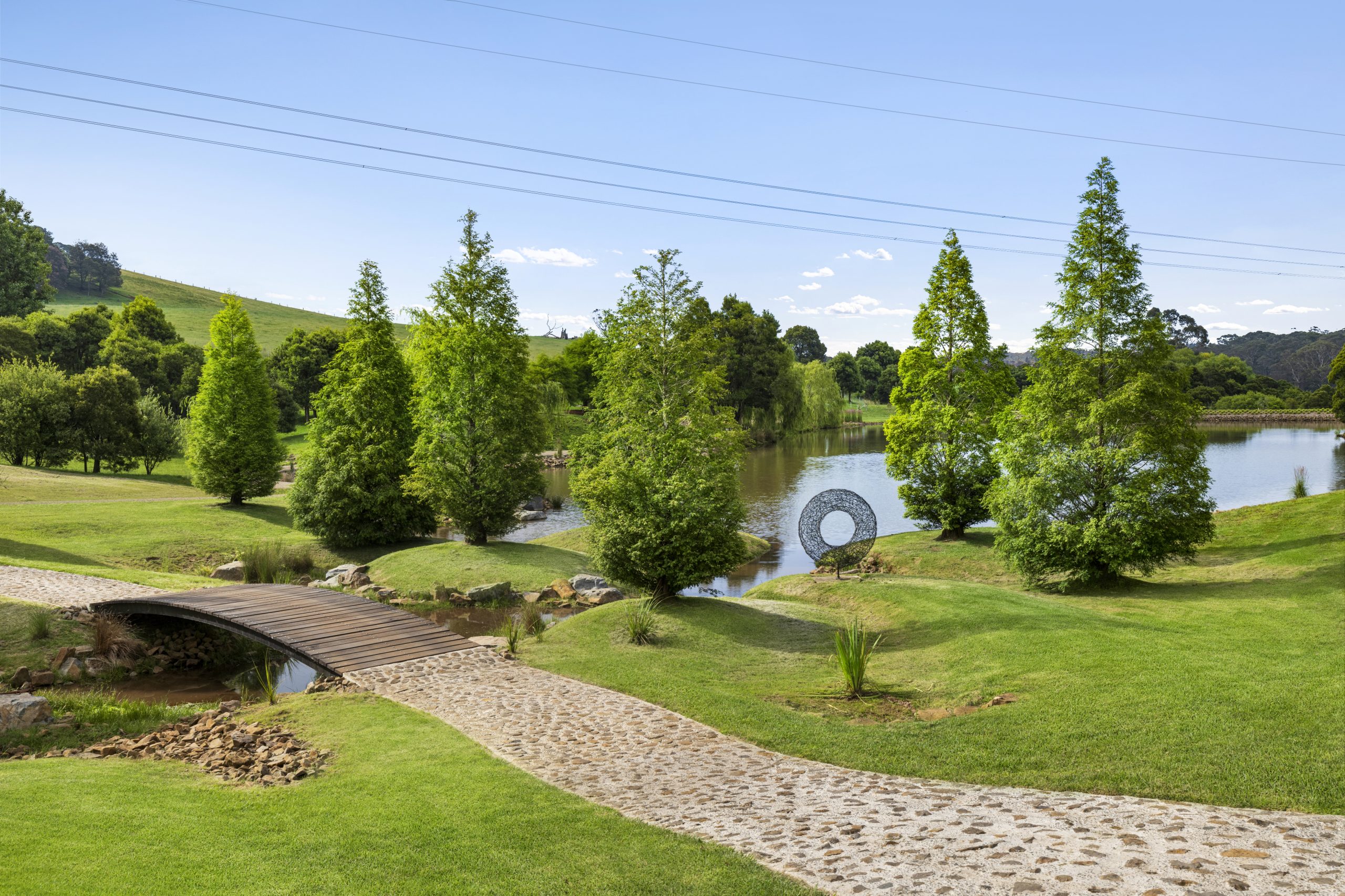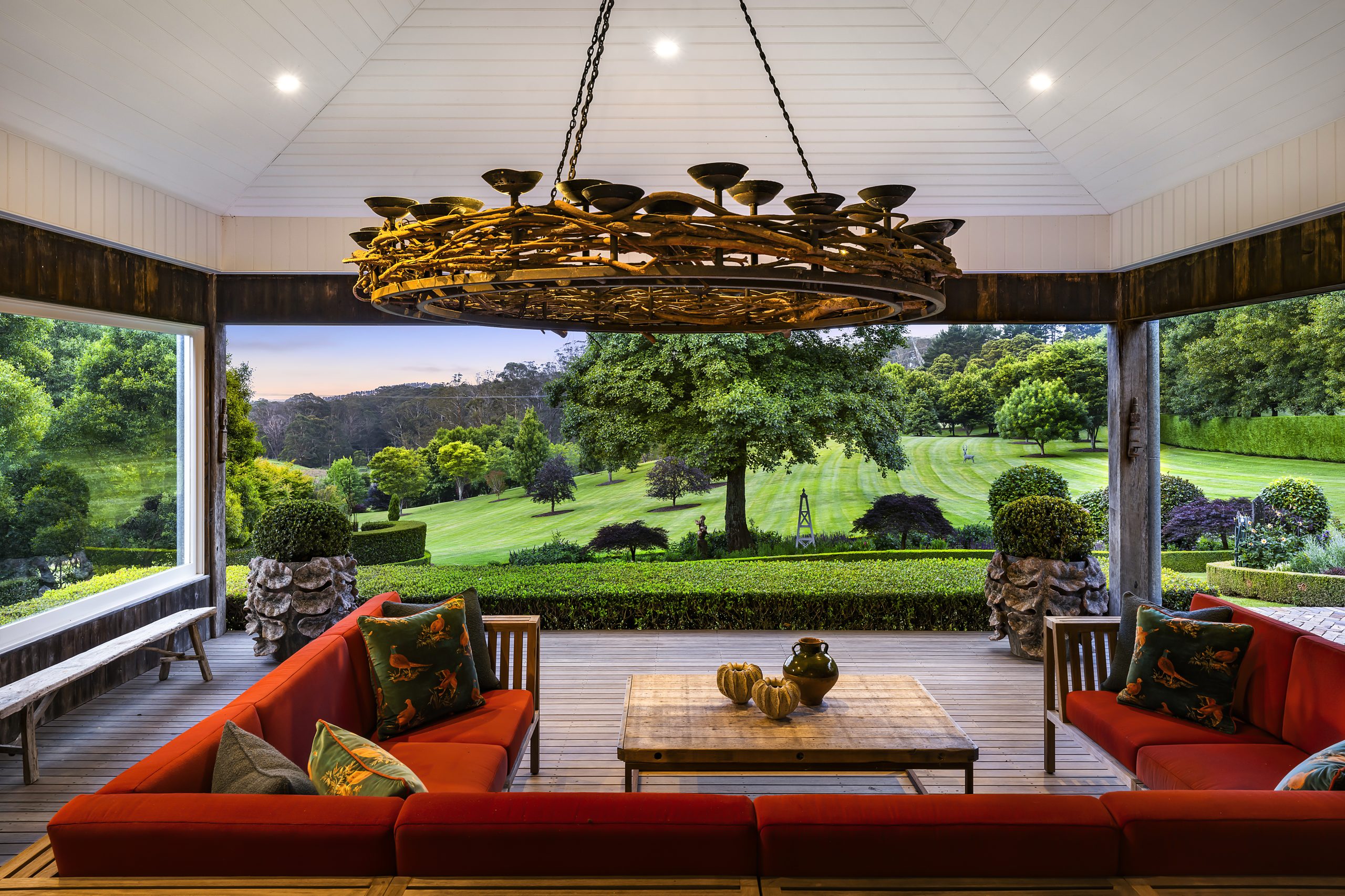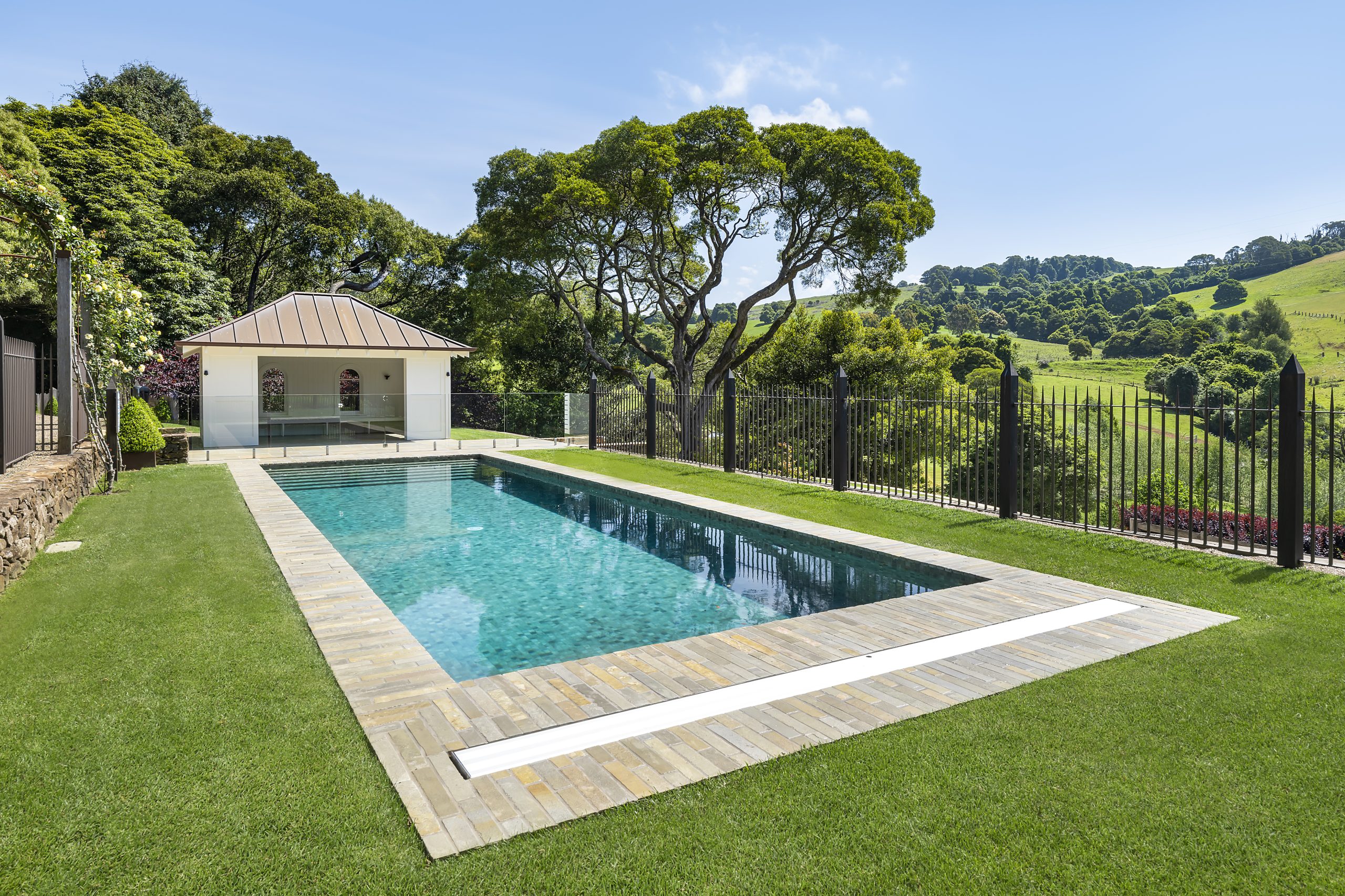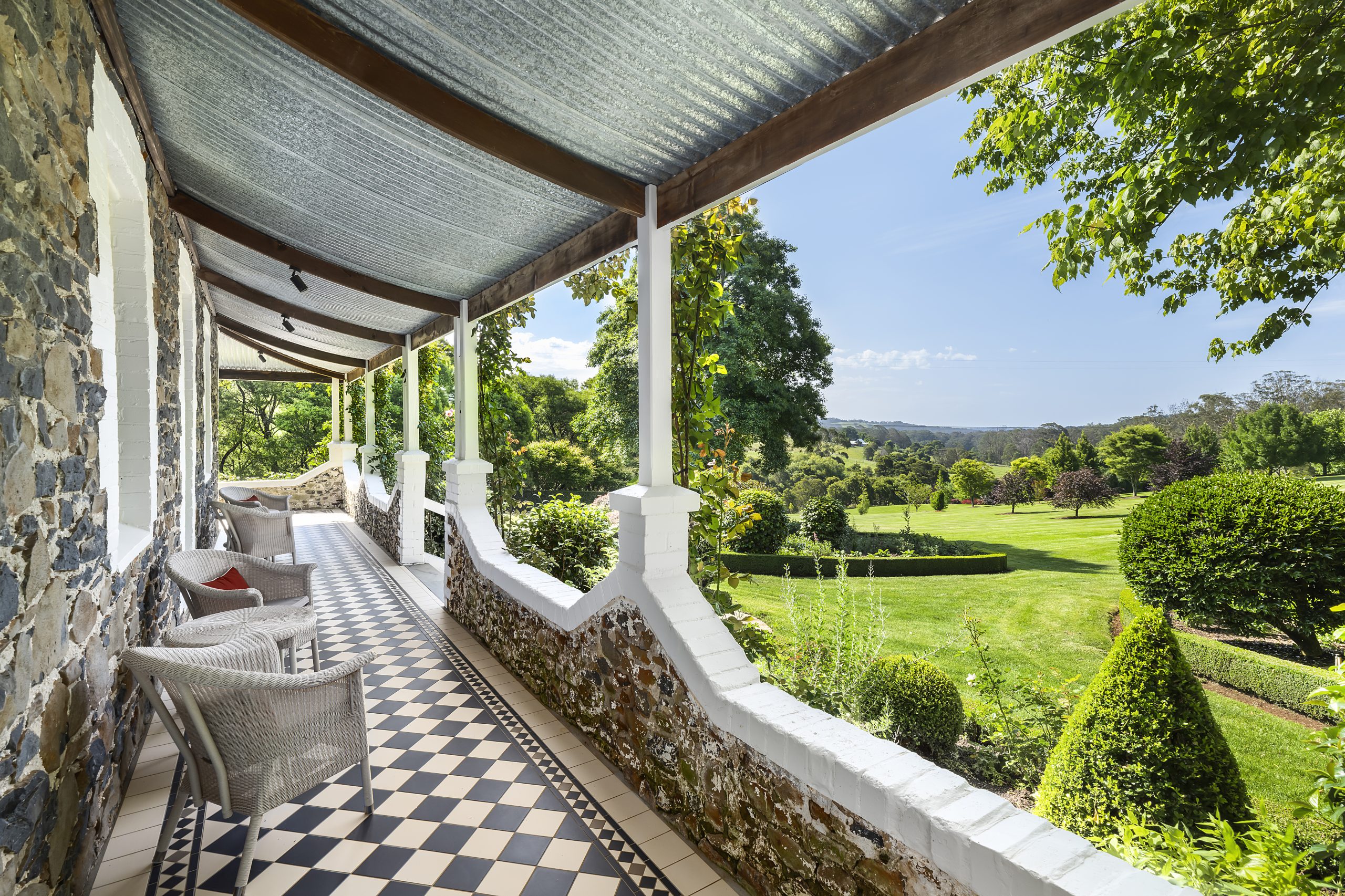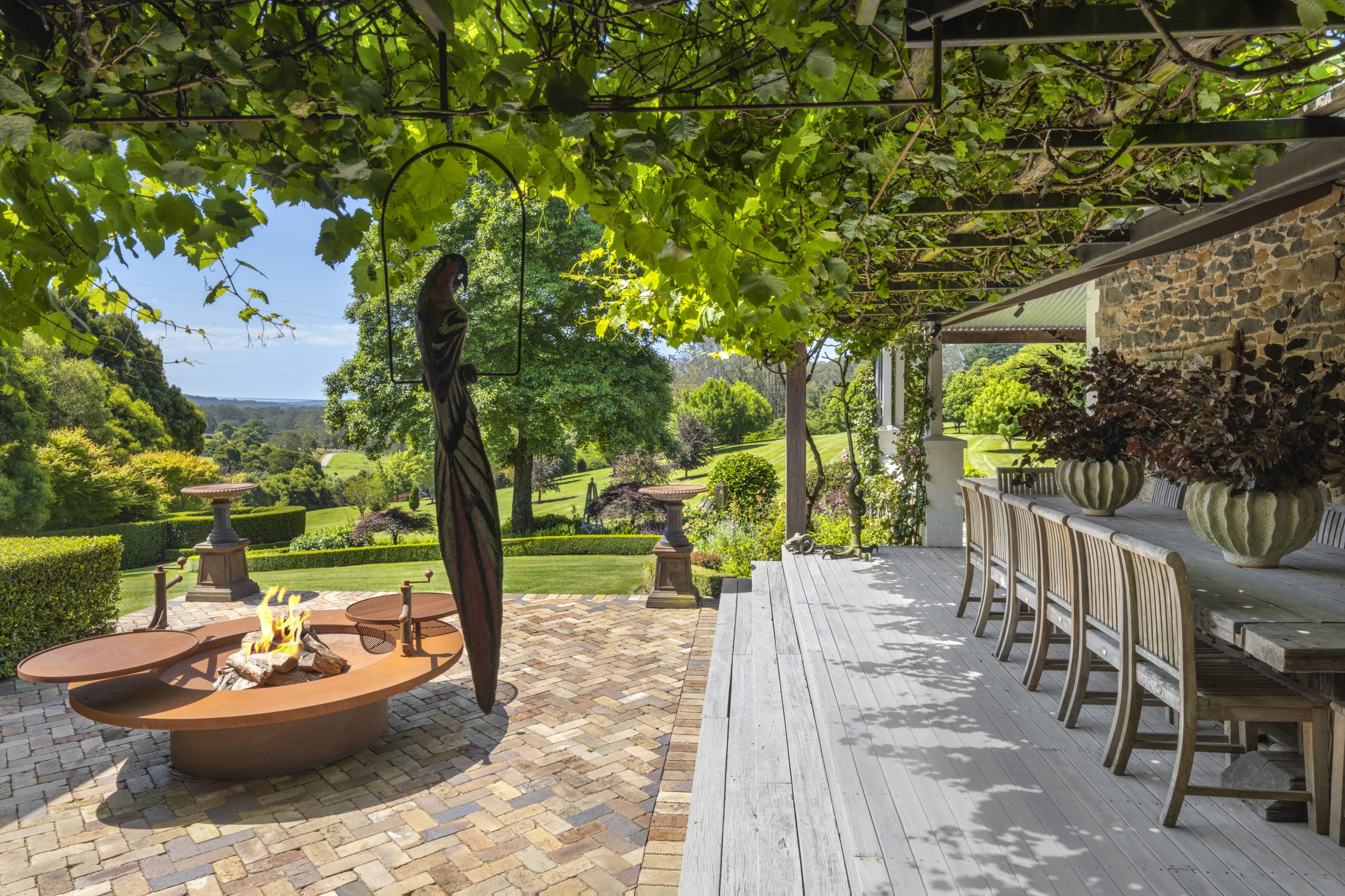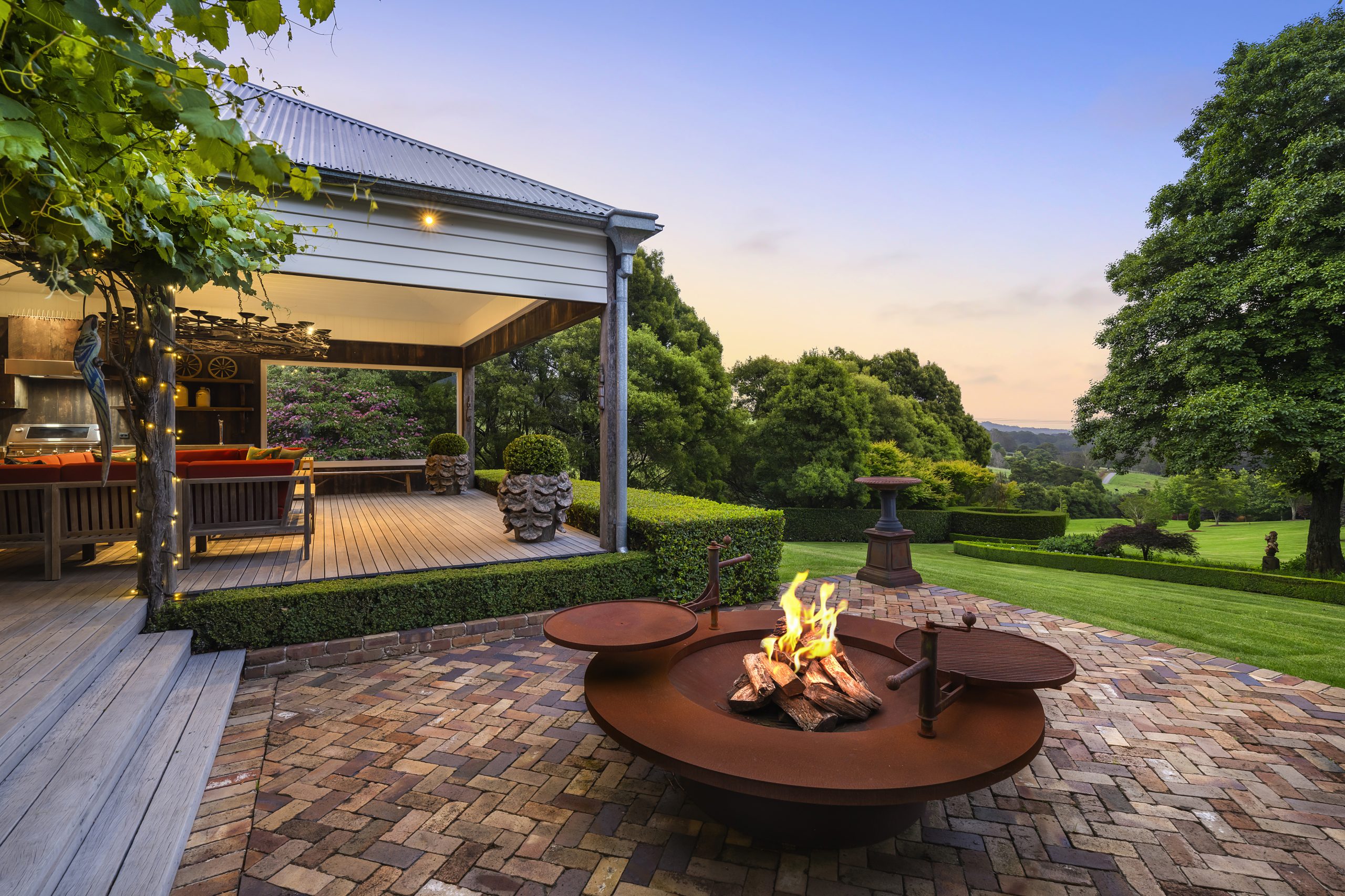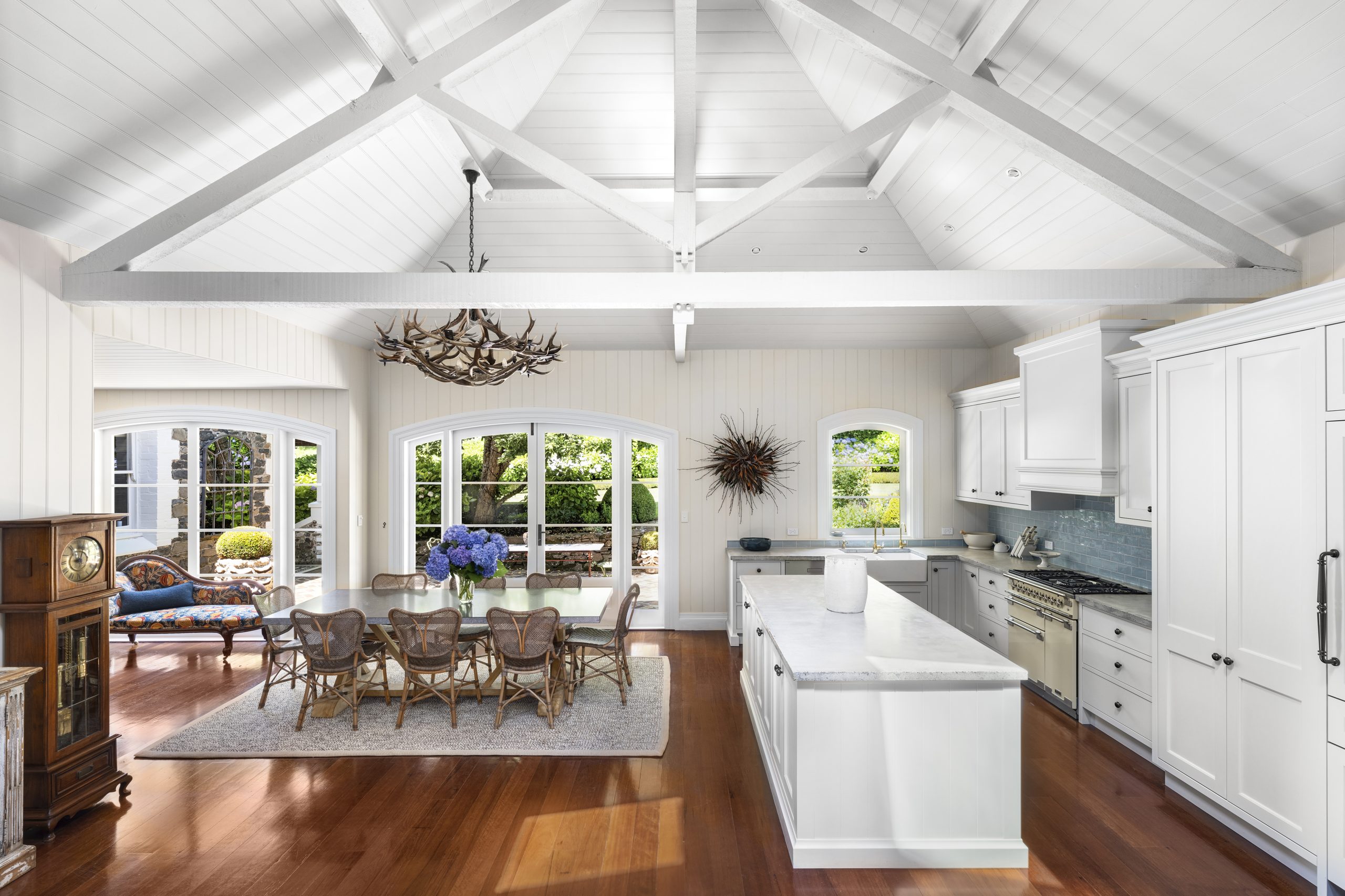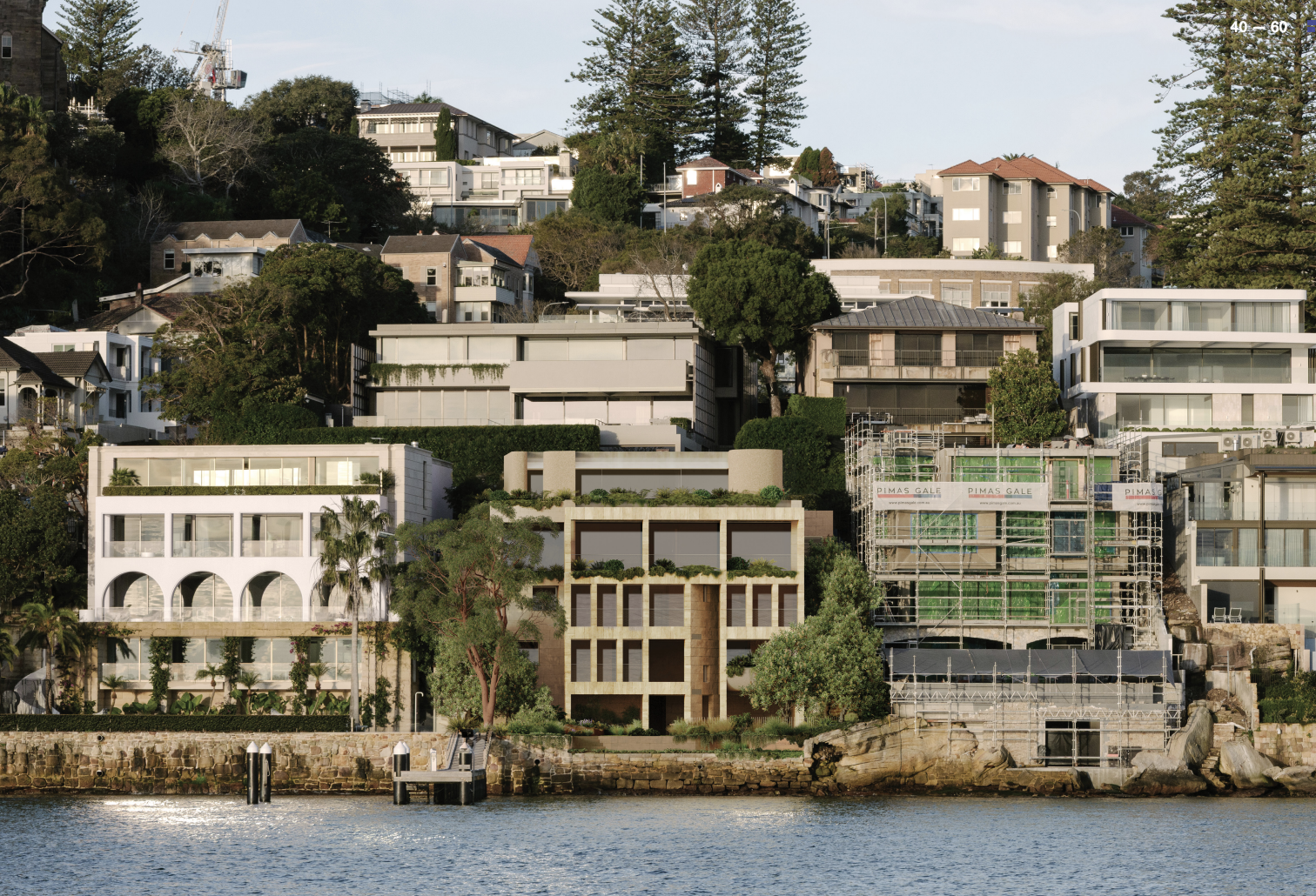A Serious Tree-Changer’s Prize In A Millionaire’s Playground
A heritage homestead with manicured gardens, private lake and income-earning guest cottage, Pepper Tree Creek near Robertson offers a rare blend of rural grandeur and lifestyle appeal in the Southern Highlands.
An ideal property for serious tree changers seeking a lucrative landing, Pepper Tree Creek estate just outside of Robertson in NSW ticks just about every box for house hunters in the millionaire’s playground of the Southern Highlands.
On more than 30ha of rolling green pastures, with a private lake and plenty of period charm, the expansive property features a converted dairy reinvented as a holiday cottage, fertile paddocks, and close to 2ha of fairytale manicured gardens.
On the market with a price guide of $14.5m to $15.5m, Pepper Tree Creek is listed with Michael Coombs and Sarah Burke of Atlas Southern Highlands. According to title records, the property last changed hands in 2019, before its latest upgrade, including a pool, when it sold for $6.7m.
Dating back to 1862, the original primary residence is a heritage stone cottage that has been sympathetically expanded and restored using stone quarried on site.
The vast floor plan has multiple entertaining zones, including formal areas such as a dining room with skylit cathedral ceilings and a piano room. These stately rooms flow through to the Wolgan Valley room – a closed in veranda with a pizza oven and French doors opening to spacious deck.
There are also everyday casual living areas from the contemporary country kitchen. The culinary space is home to a central island bench, a farmhouse sink, a grand gas cooker, a combined scullery and laundry.
An additional mud room connects the main floor plan to the four-car garage via a large breezeway, offering plenty of hidden storage for gum boots and dog toys.
Up on the first floor, the main retreat houses a separate bedroom with a fireplace, a luxury bath ensuite, a walk-in wardrobe, a sitting area with a study and another fireplace.
Back on the main level, there are three more bedrooms, a whole family bathroom, and a reading room with yet another fireplace.
For entertaining in the great outdoors, surrounded by a picturesque backdrop, there is a spacious covered terrace with a barbecue area, a fire pit, a vine-covered veranda, a mosaic pool, plus a poolside cabana.
Guest accommodation at the Old Dairy consists of a self-contained one-bedroom cottage with a full kitchen, bathroom and full-width veranda.
While the historic homestead and cottage paint a pretty picture, the impressive landscaping sets the estate apart from its neighbours.
Beyond the meticulously sculptured gardens, complete with topiary hedges, terraced sandstone vegetable gardens and a traditional greenhouse, there are 4ha of landscaped parklands. The grounds feature a remnant rainforest, local artists’ sculptures, a 1.2ha spring-fed lake with its own island and wooden bridge, as well as an elaborate chicken hutch affectionately known as Cluckingham Palace.
Although Pepper Tree Creek is connected to town water, the estate’s gardens are irrigated via timer systems tapping into the local spring water. All the paddocks have gravity-fed and spring-fed troughs for sustainable and efficient water management.
Other sustainability elements include substantial solar power infrastructure, offering the possibility for off-grid living.
Pepper Tree Creek is listed via private treaty with a price guide of $14.5 million to $15.5 million through Atlas Southern Highlands agents Michael Coombs and Sarah Burke.
From office parties to NYE fireworks, here are the bottles that deserve pride of place in the ice bucket this season.
Pure Amazon has begun journeys deep into Peru’s Pacaya-Samiria National Reserve, combining contemporary design, Indigenous craftsmanship and intimate wildlife encounters in one of the richest ecosystems on Earth.
New research reveals absolute waterfront properties commanding soaring premiums and unmatched buyer demand across the East Coast.
Australia’s most coveted real estate isn’t found in penthouses, trophy suburbs or architectural showpieces. It’s found on the water’s edge.
New analysis shows that absolute waterfront homes continue to outperform the wider prestige market, with buyers prioritising lifestyle, wellness and long-term security, firmly placing beachfront, harbourfront and riverfront properties in a class of their own.
According to new data from McGrath’s The Waterfront Advantage report, waterfront homes across Australia now command an average 86 per cent premium over comparable inland properties.
Sydney leads the increase at 122 per cent, followed by the Gold Coast at 82 per cent, Brisbane at 59 per cent and Melbourne at 43 per cent. All major cities have seen premiums rise over the past two years, underscoring the enduring power of a blue-chip waterfront position.
A Market Defined by Scarcity and Lifestyle Shifts
Several drivers sit behind this sustained strength.
The scarcity of absolute waterfront land, combined with limited turnover, has long kept supply tight. But in recent years, buyer appetite has surged as Australians place greater value on wellness, nature, and the quality of time spent at home.
The research notes that even in uncertain economic periods, prestige waterfront properties remain “reliable investments” thanks to their strong marketability and ease of repositioning within a portfolio. These homes are sought-after for both lifestyle and legacy value.
Absolute Waterfront Outperforms All Other Positions
Not all waterfront locations carry equal weight. In the year ending Q3 2025, super-prestige sales on the absolute waterfront rose 6 per cent, while waterfront reserve properties fell 30 per cent, and opposite-waterfront homes dropped 34 per cent. Premium buyers want direct frontage, and they are increasingly decisive when the right property comes onto the market.
Queensland continues to dominate East Coast waterfront activity, accounting for 58 per cent of all waterfront super-prestige sales, ahead of NSW at 38 per cent.
Victoria has remained consistent at around 9 per cent. Over the past five years, Barangaroo topped the charts for absolute waterfront apartment sales (73 sales), while Mosman led house transactions (38 sales). Regional standouts included Broadbeach Waters and Noosaville.
Maritime Facilities: The Luxury Buyers Now Expect
For prestige homeowners, proximity to water is only part of the appeal. Increasingly, buyers want direct boating access and exclusive maritime amenities.
The report shows that two-thirds of absolute waterfront sales included at least one maritime facility. Pontoons appeared in 28 per cent of sales, jetties in 26 per cent, and smaller shares featured slipways or moorings.
This reflects Australia’s strong boating culture. More than 900,000 vessels were registered nationally in 2025, with 83 per cent located along the East Coast. Boats between six and eight metres recorded the fastest growth, rising 19 per cent over five years.
Private Beach Access: The Ultimate Luxury Premium
Among all prestige property features, private beach access delivers one of the most substantial price uplifts. These tightly held homes recorded a 71 per cent value increasse in Q3 2025 compared with inland counterparts, up from 44 per cent in 2017.
The report attributes this surge to scarcity, heightened demand during the pandemic and the lasting appeal of privacy and seclusion.
Harbour Homes Still Command the Highest Premiums
Harbour frontage remains Australia’s most valuable waterfront category, delivering a 125 per cent increase over non-waterfront homes.
This is largely driven by Sydney Harbour’s deep waters, natural beauty and globally recognised backdrop. Coastal homes recorded a 93 per cent uplift, while riverfront residences achieved 74 per cent. Canal-front homes held steady at around 40 per cent.
Strong Outlook for 2026 and Beyond
The outlook for premium waterfront homes remains exceptionally strong. With limited supply, sustained buyer demand and a national shift toward lifestyle-led decision-making, absolute waterfront properties are expected to continue outperforming the broader prestige market.
As the report concludes, waterfront homes are not just coveted lifestyle properties; they are “enduring legacy investments” that combine prestige, privacy and long-term financial security.
With two waterfronts, bushland surrounds and a $35 million price tag, this Belongil Beach retreat could become Byron’s most expensive home ever.
From Italy’s $93,000-a-night villas to a $20,000 Bowral château, a new global ranking showcases the priciest Airbnbs available in 2026.










